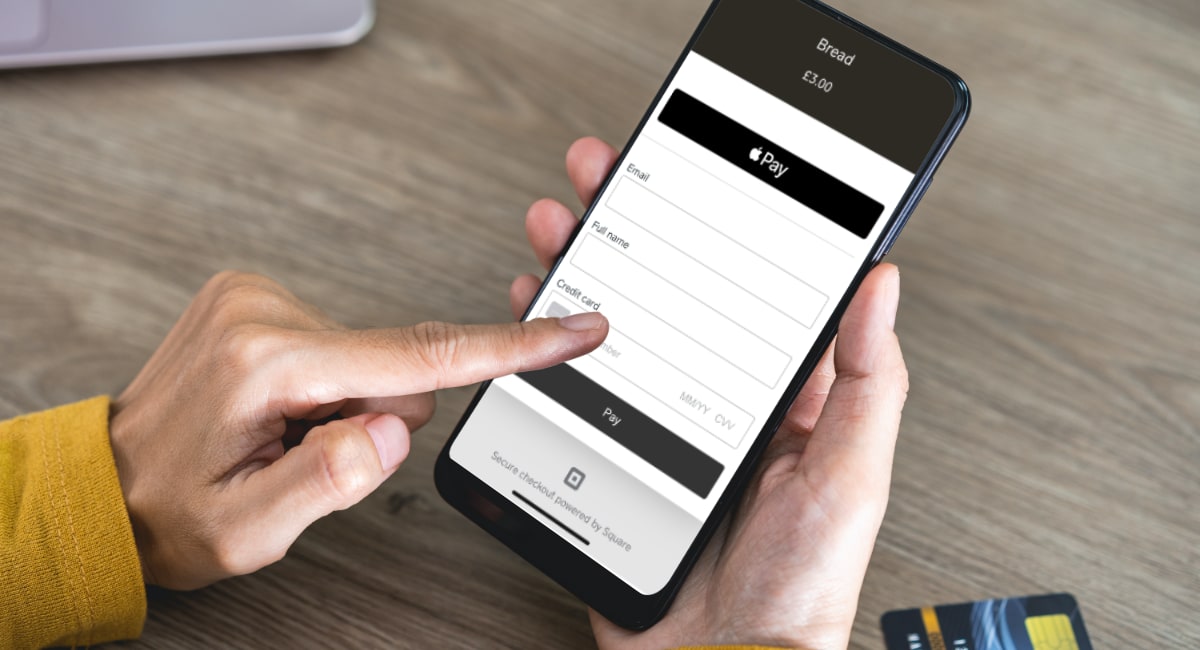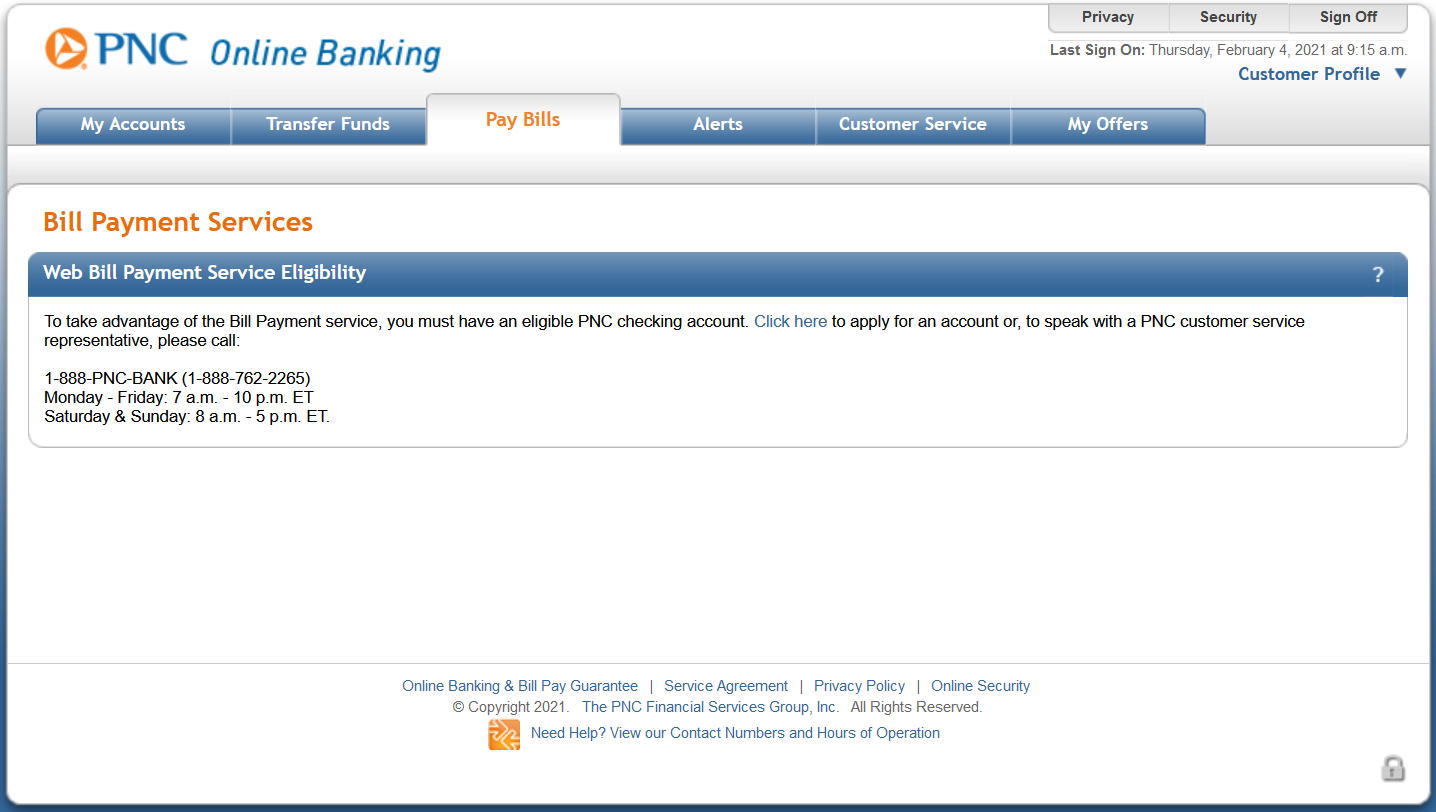Definition of an External Account
An external account in banking refers to a financial account held by an individual or a business at a different financial institution than their primary bank. It provides the account holder with the convenience of accessing banking services and conducting transactions beyond the scope of their main bank.
External accounts serve as a bridge between different banking institutions, enabling seamless transfer of funds and transactions between accounts held at separate banks. These accounts are commonly used by individuals or businesses to manage their finances efficiently and diversify their banking relationships.
Essentially, an external account acts as an intermediary between the primary bank account and other financial institutions. It allows users to link and transfer funds between the two accounts, providing greater flexibility and accessibility in managing finances.
It’s important to note that external accounts can come in different forms, such as savings accounts, checking accounts, money market accounts, or even investment accounts. The specific terms and conditions, fees, and features may vary depending on the financial institution and the type of account chosen.
Furthermore, external accounts can be accessed through various means, including online banking platforms, mobile applications, and even traditional methods like branch visits and telephone banking. These different access channels provide customers with the convenience of managing their finances whenever and however they prefer.
Overall, an external account functions as an extension of an individual’s or business’s main banking relationship, offering additional benefits and widening the range of financial services that can be accessed.
How External Accounts Work
External accounts work by establishing a connection between two different financial institutions, allowing the account holder to move funds and conduct transactions seamlessly between their primary bank and the external account.
When setting up an external account, the account holder typically goes through a verification process to confirm their identity and ownership of the external account. This verification process ensures the security and integrity of the financial transactions that will take place between the two accounts.
Once the external account is approved and linked to the primary bank account, the customer can initiate transfers and transactions. This can include transferring funds from the primary bank account to the external account or vice versa. These transfers can be performed electronically through online banking platforms or mobile applications, or through other traditional methods depending on the capabilities of the financial institutions involved.
External accounts can also be used for bill payments, making it easier for individuals or businesses to manage their expenses. By linking the external account to their primary bank’s bill payment system, users can conveniently pay bills using funds from either the primary account or the external account.
Furthermore, some external accounts offer the ability to earn interest on deposited funds. This can be particularly beneficial for individuals looking to take advantage of higher interest rates offered by the external account or for businesses that need segregated accounts for specific purposes, such as tax payments or employee payroll.
It’s important to note that while external accounts provide greater flexibility and convenience, they may also be subject to certain limitations and restrictions. These can include transaction limits, fees for transferring funds between accounts, and potential delays in processing times. Account holders should familiarize themselves with the terms and conditions of their external account to ensure they understand the potential implications and any associated costs.
In summary, external accounts operate by establishing a connection between different financial institutions, allowing individuals or businesses to manage their finances more efficiently and diversify their banking relationships. By providing seamless transfer of funds and the ability to conduct transactions beyond the primary bank, external accounts offer enhanced flexibility and accessibility in managing financial affairs.
Benefits of External Accounts
External accounts offer several advantages for individuals and businesses alike. Let’s explore some of the key benefits of having an external account:
1. Diversification of banking relationships: By having an external account, account holders can diversify their banking relationships. This can be beneficial in a variety of ways, including spreading their funds across different institutions, mitigating risks associated with a single bank, and potentially accessing a wider range of banking products and services.
2. Enhanced convenience: External accounts provide the convenience of managing multiple accounts from different institutions through a single interface. This eliminates the need to maintain separate logins and navigate multiple online banking platforms. Users can easily transfer funds, make payments, and monitor transactions all in one place.
3. Improved accessibility: With an external account, individuals or businesses can access banking services at different institutions. This is particularly advantageous when the primary bank does not offer certain products or services that may be available at the external institution. Account holders can take advantage of better interest rates, investment options, or specialized financial products.
4. Flexibility in managing finances: External accounts allow users to move funds between the primary account and the external account seamlessly. This provides flexibility in managing finances, enabling individuals or businesses to allocate funds based on their specific needs, such as saving for a specific goal, handling business expenses, or segregating funds for tax purposes.
5. Interest-earning potential: Some external accounts offer higher interest rates compared to traditional bank accounts. By depositing funds in an external account, individuals or businesses have the opportunity to earn more on their savings, potentially increasing their overall return on investment.
6. Streamlined bill payments: Many external accounts can be linked to bill payment systems, allowing individuals or businesses to conveniently pay bills directly from their external account. This simplifies the process of managing and tracking expenses, ensuring timely payments without the need for manual intervention.
7. Financial privacy: For individuals or businesses who value financial privacy, external accounts can offer an added layer of confidentiality. By maintaining accounts at different financial institutions, account holders can shield their financial activities from being consolidated in one place.
Ultimately, external accounts provide individuals and businesses with greater financial flexibility, accessibility, and convenience. By leveraging the benefits offered by these accounts, account holders can effectively manage their finances and make the most of their banking relationships.
Types of External Accounts
External accounts come in different types, each serving specific purposes and catering to the diverse needs of individuals and businesses. Let’s explore some of the common types of external accounts:
1. External Savings Account: This type of external account allows individuals or businesses to save money while leveraging the benefits offered by a different financial institution. External savings accounts often provide competitive interest rates, making them an attractive option for individuals looking to grow their savings.
2. External Checking Account: External checking accounts offer individuals or businesses the convenience of managing day-to-day transactions through an account held at a different financial institution. This type of account can be beneficial for individuals who want to separate their personal and business finances or for businesses operating in different regions.
3. External Money Market Account: Money market accounts are a type of external account that typically offers higher interest rates compared to regular savings or checking accounts. They are suitable for individuals or businesses with a larger amount of idle funds that they seek to invest while maintaining liquidity.
4. External Investment Account: External investment accounts enable individuals or businesses to access various investment opportunities beyond the offerings of their primary bank. These accounts are commonly used to invest in stocks, bonds, mutual funds, or other securities through brokerage firms or investment platforms.
5. External Retirement Account: Individuals can choose to open an external retirement account with a different financial institution to diversify their retirement savings portfolio. These accounts, such as Individual Retirement Accounts (IRAs) or 401(k) rollover accounts, offer tax advantages and a wider range of investment options for long-term retirement planning.
6. External Business Account: Businesses often have specific financial needs that may be better served by an external business account. These accounts can provide customized services such as merchant services, corporate banking, foreign currency exchange, and international payment solutions.
7. External Trust Account: Trust accounts are established to hold and manage assets on behalf of a beneficiary. These external accounts are typically managed by a trustee at a separate financial institution to ensure the proper administration and protection of the trust assets.
It’s important to note that the availability and features of these types of external accounts may vary depending on the financial institution and the specific banking regulations in different countries. Potential account holders should research and compare the options provided by different institutions to find the external account that best suits their needs.
How to Set Up an External Account
Setting up an external account involves a few steps to establish the connection between the primary bank and the external financial institution. Here is a guide on how to set up an external account:
1. Research and choose a financial institution: Begin by researching different financial institutions that offer external account services. Consider factors such as reputation, fees, interest rates, customer service, and the specific types of accounts available.
2. Gather necessary documentation: The external financial institution will likely require certain documentation to set up the account. This may include personal identification, proof of address, and tax identification numbers. Have these documents readily available to expedite the account opening process.
3. Visit the financial institution’s website or branch: Whether opening the account online or in-person, visit the financial institution’s website or branch to initiate the account setup process. Follow the instructions provided or speak to a representative to guide you through the necessary steps.
4. Complete the application: Fill out the required application form accurately and provide the requested information. This may include personal details, contact information, and the desired account type. Double-check the information before submitting to ensure its accuracy.
5. Link the external account to your primary bank account: Once your application is approved, you will need to link the external account to your primary bank account. This can typically be done by providing the necessary account details or through the online banking platform of your primary bank.
6. Verify the external account: Some financial institutions may require additional verification steps to confirm your ownership of the external account. This may involve small deposit verification, linking a debit card from the external account, or providing a voided check for account validation.
7. Set up online access: If the external account offers online banking services, create a username and password to access your account online. This will allow you to conveniently manage your external account and perform various banking transactions remotely.
8. Fund the external account: Transfer funds from your primary bank account to the newly established external account. This can typically be done through online banking or by initiating a transfer through your primary bank’s services.
9. Familiarize yourself with the account features: Take the time to explore and understand the features and limitations of your external account. Be aware of any transaction limits, fees, or additional services provided by the financial institution.
10. Monitor and manage your external account: Regularly review your external account statements, monitor transactions, and manage your funds accordingly. Stay informed about any updates or changes to the account terms and conditions.
By following these steps, you can successfully set up an external account and enjoy the benefits of having an additional banking relationship. Remember to keep track of any communication from the financial institution and maintain the security of your account information for a smooth and secure banking experience.
Potential Risks and Limitations of External Accounts
While external accounts offer various advantages, it is important to be aware of the potential risks and limitations associated with them. Here are some of the key considerations:
1. Security vulnerabilities: Using external accounts means providing sensitive personal and financial information to multiple financial institutions. It is crucial to be vigilant about online security and use secure internet connections to minimize the risk of data breaches or unauthorized access to your accounts.
2. Limited customer support: Some financial institutions may provide limited customer support for external accounts, especially if they don’t have a direct physical presence. Before opening an external account, ensure that the institution offers adequate customer service channels to address any issues or concerns that may arise.
3. Transaction fees: Transferring funds between different financial institutions may incur transaction fees, especially for wire transfers or expedited transfers. These fees can reduce the overall financial benefit of having an external account. It is important to carefully consider the costs associated with transactions and balance them against the benefits provided by the external account.
4. Potential delays in transfers: Transferring funds between external accounts and your primary account may encounter processing delays, depending on the financial institutions involved. It is essential to plan accordingly and allow sufficient time for transfers, especially for time-sensitive transactions or bill payments.
5. Limited integration with online banking platforms: Some external accounts may not seamlessly integrate with the online banking platforms of the primary bank. This can result in a fragmented banking experience and require separate logins and interfaces for each account. Consider the convenience factor and ensure that the overall experience meets your expectations.
6. Regulatory differences: Financial regulations and policies may vary among different institutions and jurisdictions. It is important to be aware of any regulatory differences when using external accounts, especially when dealing with cross-border transactions or accessing international banking services.
7. Potential account restrictions: External accounts may have specific limitations, such as minimum balance requirements, transaction limits, or restrictions on certain types of transactions. Ensure that you review and understand the terms and conditions of the external account to avoid any unexpected limitations or penalties.
8. Dependency on multiple institutions: Having external accounts means relying on multiple financial institutions to meet your banking needs. This can add complexity to your financial management and require monitoring multiple accounts and statements. It’s important to stay organized and keep track of all account activities to prevent any potential oversights or errors.
By understanding and considering the potential risks and limitations of external accounts, individuals and businesses can make informed decisions when choosing to open and utilize these accounts. Assessing the associated risks and evaluating them against the benefits will help ensure that the use of external accounts aligns with your financial goals and preferences.
Frequently Asked Questions about External Accounts
Here are answers to some common questions individuals and businesses have about external accounts:
1. Can I link multiple external accounts to my primary bank account?
Yes, in most cases, you can link multiple external accounts to your primary bank account. This allows you to manage and transfer funds between different external accounts seamlessly.
2. Are there any fees associated with setting up and using an external account?
Financial institutions may have fees associated with opening an external account and maintaining it. These fees can vary depending on the institution and the specific type of account. It is recommended to review the fee schedule carefully before opening an external account.
3. Can I move funds between my external account and my primary bank account instantly?
The time it takes to move funds between your external account and your primary bank account may vary depending on the financial institutions involved. Some transfers may be processed instantly, while others may take a few business days to complete. It is advisable to check with your financial institutions for the specific transfer times and any associated delays.
4. Can I access my external account through my primary bank’s online banking platform?
In many cases, external accounts can be accessed through the online banking platform of your primary bank. This allows you to view account balances, transfer funds, and manage transactions seamlessly within one interface. However, it is important to check with your primary bank to ensure compatibility with external accounts.
5. What happens if I need customer support for my external account?
Customer support for external accounts can vary depending on the financial institution providing the account. Some institutions may have dedicated customer service channels for external accounts, while others may offer limited support. Make sure to research the available customer support options and contact the financial institution directly for any account-related inquiries or issues.
6. Is the interest rate on an external savings account higher than a regular savings account?
The interest rates on external savings accounts can vary depending on the financial institution and prevailing market conditions. In some cases, external savings accounts may offer higher interest rates compared to regular savings accounts. It is recommended to compare interest rates offered by different institutions to find the account that offers the highest potential return on your savings.
7. Are there any withdrawal limits or transaction restrictions on external accounts?
External accounts may have specific withdrawal limits and transaction restrictions. These can include daily or monthly limits on transfers, ATM withdrawals, or specific types of transactions. It is important to review the terms and conditions of the external account to understand any limitations and ensure they align with your banking needs.
8. Can I use my external account for business purposes?
Yes, external accounts can be used for both personal and business purposes. Financial institutions often offer external account options specifically tailored to business banking needs, such as external business accounts or merchant services accounts. These accounts provide businesses with additional banking flexibility and specialized services.
These are general answers to frequently asked questions about external accounts. However, it is essential to consult with your financial institution and review the specific terms and conditions of the external account you are considering to obtain accurate and up-to-date information.
Conclusion
External accounts provide individuals and businesses with the flexibility to manage their finances beyond their primary bank. By establishing a connection between different financial institutions, external accounts offer various benefits such as diversification of banking relationships, enhanced convenience, improved accessibility, and flexibility in managing finances.
Types of external accounts range from savings and checking accounts to investment and retirement accounts, catering to specific financial needs and goals. Setting up an external account involves researching and choosing a financial institution, completing an application, and linking the external account to the primary bank account.
While external accounts offer advantages, it is essential to consider the potential risks and limitations associated with them. Security vulnerabilities, transaction fees, delays in transfers, and account restrictions are among the factors to be aware of when using external accounts. Understanding the terms and conditions, reviewing documentation, and staying vigilant can help mitigate potential risks.
Frequently asked questions about external accounts cover topics such as linking multiple accounts, fees, fund transfer times, customer support, interest rates, withdrawal limits, and using external accounts for business purposes. It is important to consult with financial institutions and carefully review the specific terms and conditions of the external account in question.
In conclusion, external accounts offer individuals and businesses the opportunity to manage their finances more effectively, access additional banking services, and diversify their banking relationships. By understanding the benefits, risks, and limitations associated with external accounts, individuals and businesses can make informed decisions for their financial well-being.

























